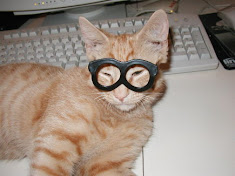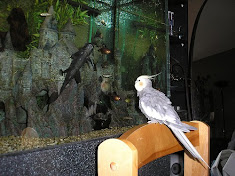The Poodle's coat consists of two types of hair. The outer coat should be thick, wiry and curly. The undercoat must be soft and woolly to provide warmth. Puppies, however, are exceptions. Poodle puppy coats are soft and fine with little or no curl, but often with a slight wave.
As the dog matures into adulthood, the coat develops a thick, curly quality. The best way to judge a puppy's potential adult coat is to look at the parents. If they carry good coats, their puppies will likely possess them too.
Ever since the first hunters trimmed their retrieving dogs to prevent drowning, the Poodle hairstyle has been a favorite topic of conversation among dog people. Initially, Poodles sported either a Continental clip or an English Saddle clip. Now, hundreds of years later, these are still popular as they are required clips for show dogs.
Puppies under one year of age are shown in a simple trim known as a Puppy clip. Only the face, throat, feet and base of tail are clipped. The tail displays the characteristic pompom at its end. The body coat is lightly trimmed to give it a neat unbroken line for a pleasant appearance.
The Continental clip has full hair around the chest and rib cage, with shaved hindquarters and legs. Large pompons are sculpted over each hip above the area of the kidneys (optional) and around the ankles for protection from the cold.
The English Saddle clip permits a short mantle of hair over the hindquarters and fullcoat from the waist to the topknot and ears. The ankle and knee joints are also protected with pompons.
All Poodles are given a topknot of hair over the skull that is brushed out and groomed to stand erect in a rounded pompon. Adult dogs must be shown in either the English Saddle or Continental clip; the only exception being competitors in Stud Dog classes, for which a Sporting clip is permitted. The English Saddle and Continental are the clips of choice for the conformation ring around the world, except in the UK, where the Lion clip is preferred.
Pet Poodles and those not being shown in breed conformation classes at dog shows are usually groomed in styles designed for ease of maintenance. Often the body hair is clipped short, with the legs trimmed a bit longer. Some male Poodles sport tiny mustaches around the muzzles.
The pet style is usually determined by the owner's willingness and capability to maintain the coat in a well-groomed fashion. In addition. Poodles that spend a lot of time outdoors are usually kept shorter because it's easier to keep the coat clean when the hair isn't too long.
About the Author
Written by Daniel Millions
Purchase english bulldogs and other terrier breeds.
Article Source: http://www.articlesbase.com/pets-articles/whats-with-those-poodle-hair-cuts-147391.html
 |
| Country Poodles by Living in Monrovia |
Ever since the first hunters trimmed their retrieving dogs to prevent drowning, the Poodle hairstyle has been a favorite topic of conversation among dog people. Initially, Poodles sported either a Continental clip or an English Saddle clip. Now, hundreds of years later, these are still popular as they are required clips for show dogs.
Puppies under one year of age are shown in a simple trim known as a Puppy clip. Only the face, throat, feet and base of tail are clipped. The tail displays the characteristic pompom at its end. The body coat is lightly trimmed to give it a neat unbroken line for a pleasant appearance.
The Continental clip has full hair around the chest and rib cage, with shaved hindquarters and legs. Large pompons are sculpted over each hip above the area of the kidneys (optional) and around the ankles for protection from the cold.
The English Saddle clip permits a short mantle of hair over the hindquarters and fullcoat from the waist to the topknot and ears. The ankle and knee joints are also protected with pompons.
All Poodles are given a topknot of hair over the skull that is brushed out and groomed to stand erect in a rounded pompon. Adult dogs must be shown in either the English Saddle or Continental clip; the only exception being competitors in Stud Dog classes, for which a Sporting clip is permitted. The English Saddle and Continental are the clips of choice for the conformation ring around the world, except in the UK, where the Lion clip is preferred.
Pet Poodles and those not being shown in breed conformation classes at dog shows are usually groomed in styles designed for ease of maintenance. Often the body hair is clipped short, with the legs trimmed a bit longer. Some male Poodles sport tiny mustaches around the muzzles.
The pet style is usually determined by the owner's willingness and capability to maintain the coat in a well-groomed fashion. In addition. Poodles that spend a lot of time outdoors are usually kept shorter because it's easier to keep the coat clean when the hair isn't too long.
About the Author
Written by Daniel Millions
Purchase english bulldogs and other terrier breeds.
Article Source: http://www.articlesbase.com/pets-articles/whats-with-those-poodle-hair-cuts-147391.html

























